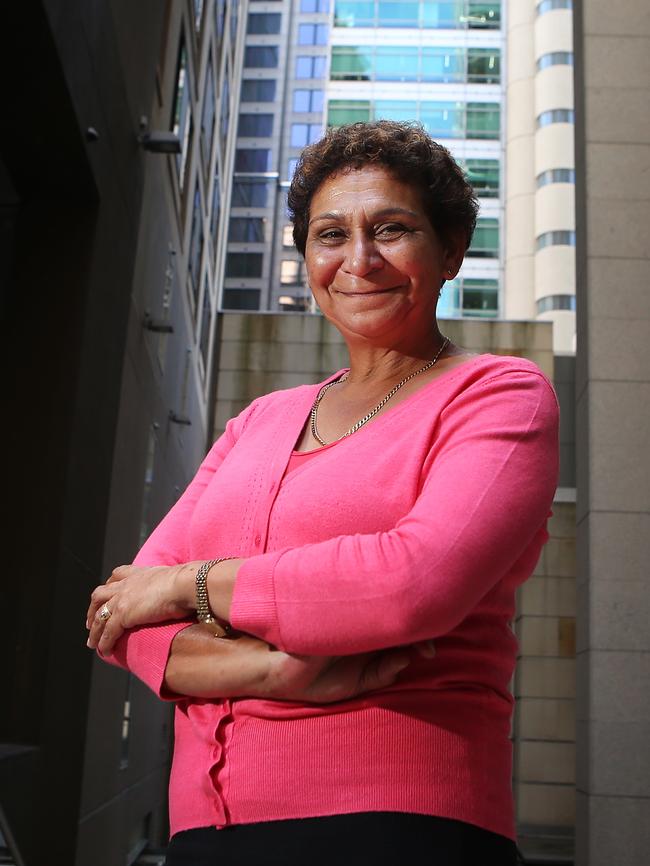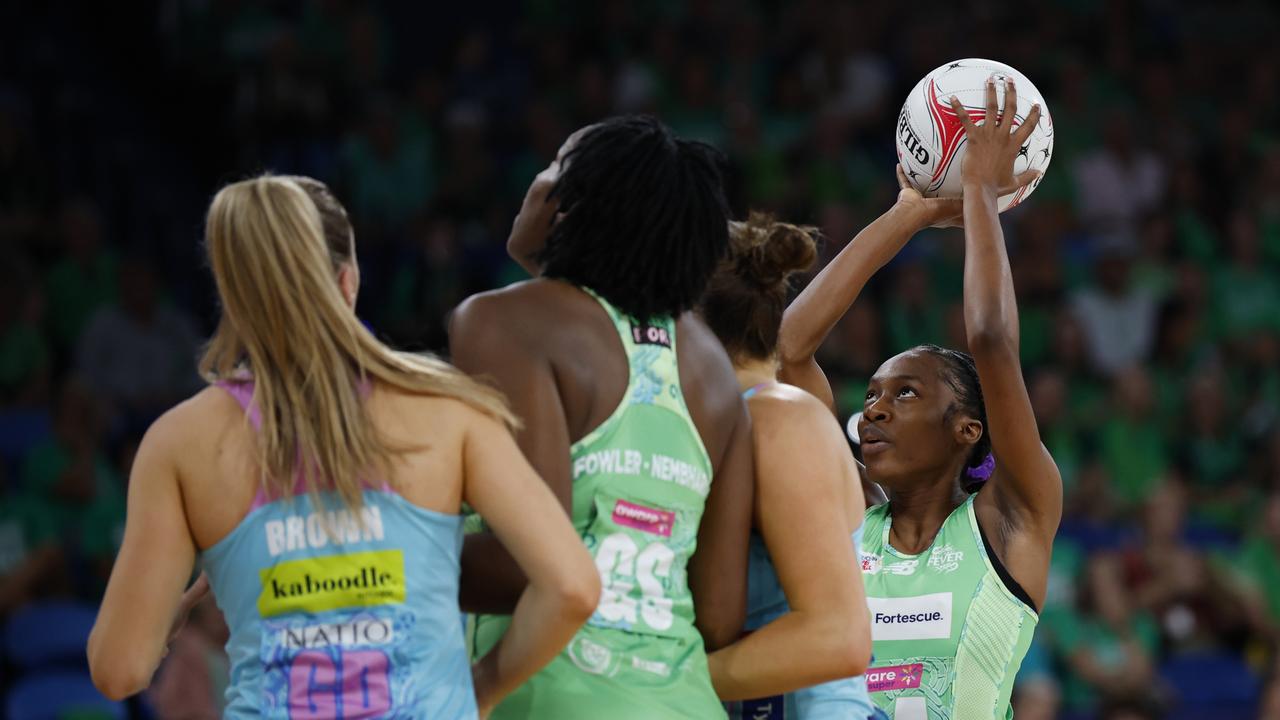Why Marcia Ella-Duncan wishes she wasn’t a role model anymore
Netball pioneer Marcia Ella-Duncan remains a role model for indigenous players but she wishes there were others to do so.

When Marcia Ella-Duncan, the first indigenous woman to represent Australia in netball, is told how inspiring her involvement in the sport has been, she’s forced to reflect on the bittersweet nature of her career.
Ella-Duncan loves to spend time coaching young girls at the Randwick Netball Association, where’s she’s dedicated much of her life since retiring from international duty in 1987, but is frustrated by the fact that she’s still inspiring young indigenous women in 2017.
“Even now I’m considered a really strong role model, which is sad really, because I should have been usurped by now,” Ella-Duncan says.
Ella-Duncan is the younger sister of three other indigenous pioneers. Her brothers Mark, Glen and Gary all played for the Wallabies in the 1980s and a fine tradition of indigenous rugby players has been maintained ever since.

However, only one other Aboriginal or Torres Strait Islander woman has played netball for Australia in the team’s 80-year history, and today there is only one among the 80-strong cohort of Super Netball players.
“The absence of that talent concerns me,” says Andrew Collins, Netball Australia’s head of high performance.
There is no shortage of enthusiasm for the sport in regional communities, though, with strong participation at a junior level.
The most recent national survey data, from 2008, revealed that 13 per cent of Aboriginal or Torres Strait Islander girls under 14 played netball, only slightly less than the 16 per cent of males who played rugby league or Australian football. And state bodies around the nation are seeing strong returns on their grassroots programs. Last year, Netball WA’s NAIDOC Netball Carnival hosted 107 teams from around the nation, which they believe makes it the largest annual indigenous sporting carnival in Australia.
But that high participation drops rapidly as netballers start to move up through high performance pathways, thanks to a combination of geography, resources and entrenched attitudes.
Queensland prospect Jemmason Power experienced these forces first hand.
A promising talent from Bowen, she worked her way from school sport to playing for the local representative team before being hit with the ultimatum that faces all regional netballers when they reach their late teens: move to the city if you want to pursue a career in netball.
Power’s academic record and netball ability earned her a scholarship to a private boarding school in Brisbane, facilitating a move that may have otherwise been prohibitively expensive. Separating indigenous children from their families is a disruption that sees many netballers struggle to stay on course.
“These kids have crazy talent, but their attendance drops as soon as they have to move away from home,” says Power.
“They don’t feel motivated, they don’t want to go to training or keep their grades up because they’re so homesick.”
Jemmason stayed in Brisbane, though, determined to disprove the coaches and teachers who she felt had made assumptions about her as an indigenous athlete.
“When I first came to Brisbane I was sick a lot, and I’d say ‘I can’t make today’s training session’ or ‘I might be a bit late’. I would get grilled and grilled because indigenous kids before me would just do that to get out of training sessions, or because they didn’t have a lift. I would be throwing up between training sessions just because I had to be there, I had to show my teammates and coaches that had these previous misconceptions about indigenous kids that we could be reliable, that we could keep our grades up, that we could come to trainings, we’re not just relying on our natural abilities.”
Ella-Duncan also feels that she was “invisible” for much of her career, often overlooked by selectors before becoming the first Aboriginal woman invited to train at the AIS.
Netball Australia’s Collins concedes that “there’s probably been a lack of education and awareness around the unique characteristics of some Aboriginal athletes, and how they my want to adapt into the system.”
The national body has made great strides to address these cultural barriers, implementing a broad-ranging reconciliation action plan that includes awareness and bias training for netball administrators and staff.
“Netball Australia has shown tremendous courage in being willing to look at these systemic barriers and how they can be overcome,” says Ella-Duncan, a newly elected board member at Netball Australia who has helped guide the organisation’s reconciliation action plan.
In a submission during a 2012 federal government report into indigenous sport participation, then Netball Australia chief executive Kate Palmer expressed her frustration that a lack of public funding had hamstrung the sport’s ability to better engage its indigenous athletes.
Today, the sport does access some grants, but the majority of its indigenous programs — including the RAP — are funded by Netball Australia and partner organisations. Australia Post, for example, has been a significant supporter of One Netball, the sport’s major inclusion program.
Collins also insists that financial support can’t explain the whole story.
“Funding is a part of it, netball certainly doesn’t have the resources or capacity that rugby or the football codes have. But at the same time, our record probably still isn’t good enough. We shouldn’t use that as an excuse for not achieving more,” he says.
The lack of diverse role models is a problem for netball, which Power feels is still seen primarily as an “white” sport.
Ella-Duncan agrees, saying that “we really do need to be looking Aboriginal netballers on the screen at the biggest games.”
Jemma Mi Mi, a 21 year old dynamic midcourter playing for the Queensland Firebirds, is currently the only indigenous player competing in Super Netball.
She grew up in Brisbane, one of four sports mad sisters, and has “always been around netty” thanks to her mother, an accomplished netballer in her own right.
Mi Mi made her debut this year, and is still working her way towards a regular starting spot in the side, but is already enthusiastic to get out into the community and inspire the next generation of talent.
“I do feel like I am a role model to indigenous girls. I just hope that girls can look at anyone in the team, no matter who it is, and think ‘oh yeah, she can do it, there’s a way for me to get there as well’,” Mi Mi says.
Netball Australia identifies talented netballers around the age of 17 for its high-performance pathways, taking approximately 30 prospects on board each year.
Andrew Collins says there are a number of indigenous athletes working their way through that pathway at the moment, and is optimistic that a bumper crop of netballers is on its way.
“We’re hopeful that we can transition them in because we do need some more role models to make it to that top level,” he says.
Ella-Duncan, meanwhile, is now a rare female indigenous voice in sports governance. She’ll be hoping that the earnest efforts of Netball Australia and its state bodies in recent years will finally yield some stars that can usurp her.



To join the conversation, please log in. Don't have an account? Register
Join the conversation, you are commenting as Logout